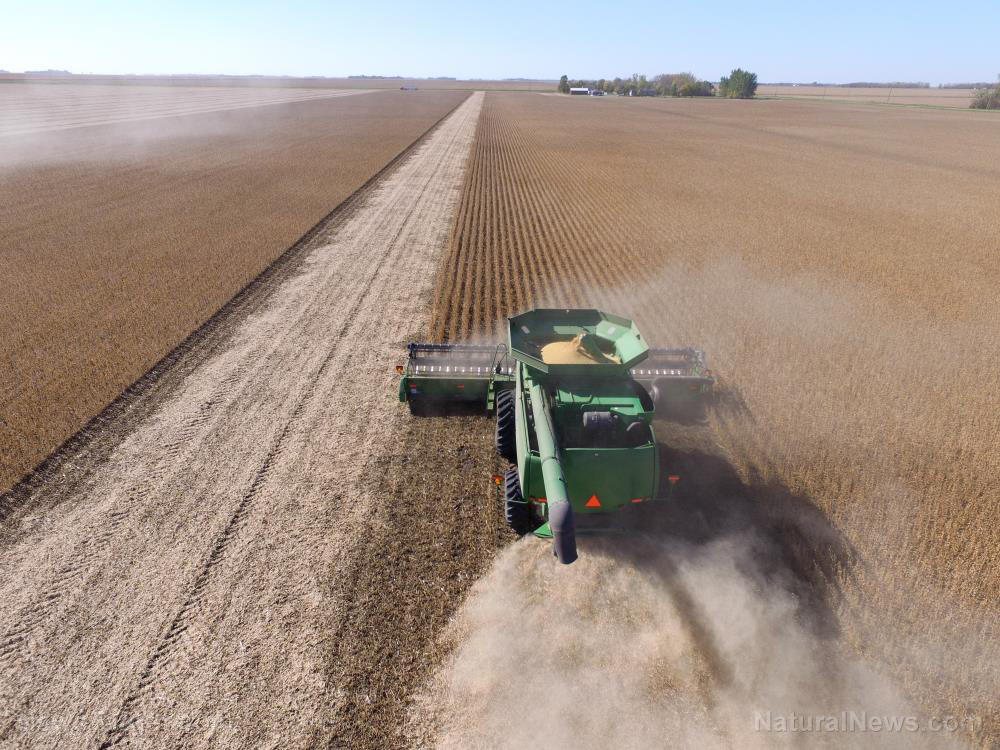Food scientists have created a new, faster way of testing for pesticide residues on vegetables using magnetic nanoparticles
03/12/2018 / By Isabelle Z.

You’ve decided that spending extra money on organic produce is worth the reassurance it gives you. Whether you’re driven by environmental concerns or you’re trying to reduce your risk of cancer, it’s a smart move for your health. However, how can you be sure that these foods you’re paying a premium for are truly free of pesticides?
Food scientists from the National University of Singapore have found a very sensitive and quick technique that can detect even the tiniest amounts of pyrethroids in vegetables. This synthetic pesticide is often applied to agricultural crops to control pests and improve yields. Ingestion of pyrethroids by eating fruits and vegetables that have been sprayed with it has been linked to adverse health effects in humans in the long term.
The methods currently used to screen produce crops for residues of pyrethroids are expensive and time-consuming. Centrifugation and column filtration can take six hours for processing and analyzing.
The NUS researchers have developed a technique that uses polystyrene-coated magnetic nanoparticles to extract the residue from vegetable crops and simple magnetic separation to analyze it. The nanoparticles are added to a liquid sample taken from the vegetables, where they essentially serve as “micro magnets” that attract the pyrethroid molecules to them. The pyrethroids that are attracted are washed off using organic solvent and analyzed.
The technique takes less than two hours and can detect residues at concentrations as small as 0.02 nanograms per gram of vegetable. It’s also a very cost-effective approach as the same nanoparticles can be reused as many as 30 times.
Technique could be modified to test other foods for different chemicals
Its uses don’t stop there; the technique could also be modified for other purposes, offering significant potential to improve food industry safety in general. The researchers are now looking at ways to expand their technique to screen for different chemicals in a variety of types of foods.
Researcher Yu Xi said: “With small modifications to the extraction process, this method can be used to detect pyrethroids in other food products such as nuts, fruits and vegetable oils. Modifications can also be made to the coating of the nanoparticles to detect other types of pesticides and chemicals including mycotoxins and antibiotics.”
Pyrethroids account for nearly a third of global pesticide use
According to researchers from the Zhejiang University in China, pyrethroids account for more than 30 percent of the world’s pesticide use. They are regularly used inside and outdoors alike for killing mosquitoes and other bugs in addition to being sprayed on crops.
The researchers said that pyrethroid residues are commonly found on vegetables as well as milk and baby food, which is very dangerous when you consider the fact that it’s an endocrine disruptor that can affect the body’s hormones. In particular, higher levels of pyrethroid exposure can increase the odds of early puberty in boys by 73 to 110 percent. Early onset of puberty has been linked to health problems in adulthood that include cancer, behavioral problems, diabetes and heart disease. It is also linked to a higher risk of depression in men and women.
It is hoped that this new detection technique will make it much easier to discern whether or not the foods we consume are legitimately pesticide-free. While this remains a lab technique for now, its ease of use and cost-effectiveness could encourage more food producers and sellers to go the extra mile to ensure their foods are truly free of these dangerous chemicals. In the future, perhaps it could even lead to testing methods people can use in their own homes for the ultimate peace of mind.
Read FoodScience.news for more coverage of science breakthroughs involving food.
Sources for this article include:
Tagged Under: agriculture, chemicals, early puberty, food safety, food science, herbicides, Pesticide Testing, pyrethroid residues, pyrethroids, toxic chemicals, vegetables



















